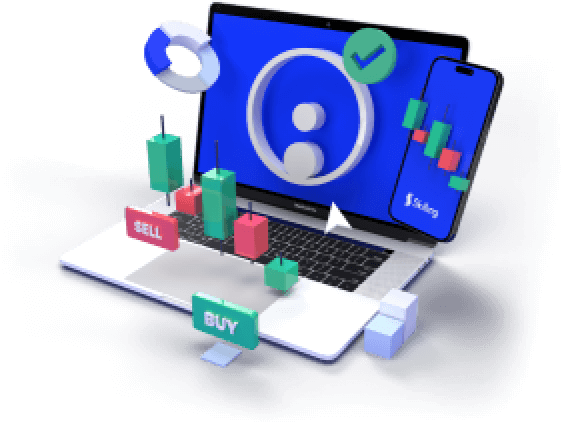Good traders watch the market. Great traders let the platform do the watching for them. TradingView alerts are one of the most overlooked features, yet they can change the way you handle CFDs. Instead of staring at charts, you set conditions and let the system notify you. This article shows how to set up alerts for prices, indicators and events, and how to link them into your trading plan when using Skilling.
Access 1,200+ global CFDs instruments.
Access a plethora of trading opportunities across the financial markets.

Why alerts matter
Markets move when you least expect it. Missing a breakout or reversal can cost time and capital. Alerts help you respond only when conditions you care about are met. That means more focus, less fatigue and fewer impulsive trades. For CFD traders who follow multiple markets, forex, indices, commodities, and crypto, alerts become essential.
Price alerts
The simplest and most used. Choose a symbol, right-click on the chart and set “Add alert on price.” You can define when the price crosses above or below a level, touches a trendline, or moves into a zone. Use these for breakout levels, support or resistance retests, or big round numbers. Always label alerts clearly. Example: “EURUSD break 1.0900; check setup.”
Indicator alerts
TradingView allows alerts on almost any indicator. RSI crossing 70 or 30, MACD line crossing, and ATR exceeding a threshold. These should match your strategy, not curiosity. If you never trade based on RSI, don’t waste alerts on it. The key is relevance: only set indicator alerts for triggers you act on.
Time-based alerts
Sometimes you just need a reminder. Set alerts for session opens (London, New York), for news events shown in the TradingView calendar, or for the end of your own trading window. Time-based alerts prevent overtrading outside your plan.
Managing alerts without overload
Too many alerts equal noise. Build a naming rule: [Symbol] + [Condition]. Example: “XAUUSD retest 1900.” Group alerts in folders by asset class. Regularly expire old alerts to keep the system clean. Remember, an ignored alert is worse than none.
Delivery and settings
Alerts can ping you inside the platform, on mobile push, email or even webhook. For most retail CFD traders, app push and email are enough. Reserve multiple channels for rare, high-value events. Adjust the expiration time so that daily levels reset.
Integrating alerts with Skilling
When ready to trade, connect TradingView to Skilling via the Trading Panel. This lets you act directly when an alert fires. For example, an alert signals EURUSD breaking a key level. Instead of scrambling to log in elsewhere, your Skilling account is already connected, and execution is one click away. Always test in demo first, then apply in live with a smaller size until the process is second nature.
Conclusion
Alerts are not magic signals. They are tools that buy you time and focus. Use them to cut noise, keep discipline and make decisions when it matters. With a structured and robust alert system, you stop chasing the market and let the market come to you.
Capitalise on volatility in index markets
Take a position on moving index prices. Never miss an opportunity.

FAQs
1. What is the easiest alert to start with?
A simple price alert at a support or resistance level.
2. Can I set alerts on custom indicators?
Yes. TradingView supports alerts on Pine Script indicators if they include alert conditions.
3. How many alerts should I keep active?
Only as many as you can respond to. For most traders, 5–15 relevant alerts per week are plenty.
4. How do alerts work with Skilling?
Once connected in the Trading Panel, you can act on alerts directly with your Skilling account, first in demo, then live.












